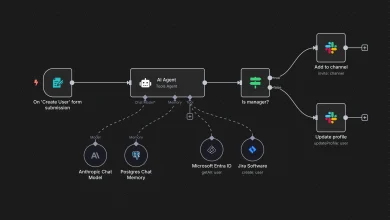For decades, procurement leaders have wrestled with a fundamental tradeoff: scale vs. strategy. Teams either build large operational functions to process intake requests and RFQs, or they keep things lean and accept that procurement can’t touch as much spend. Agentic AI is changing that equation entirely.
We’re no longer talking about automation in some distant future. We’re seeing fully autonomous sourcing journeys today. And more importantly, they are not only technically functional, they’re trusted. Procurement teams are leaning into AI to do more than streamline tasks: they’re reshaping how their entire function operates, delivering more business value than simply automating old manual processes. By taking human bias out of the equation, agentic AI enables decisions that are more business‑centric, objective, and aligned to enterprise goals rather than personal preferences.
In fact, the inclusion of Agentic Procurement in Gartner’s latest Hype Cycle confirms what we’ve been seeing for months: the shift is happening, and it’s happening fast.
What Autonomy in Sourcing Really Looks Like
Let’s start by defining what a truly autonomous sourcing journey looks like.
Imagine this: A stakeholder in Marketing needs to procure a creative agency. They submit a short intake request, just a paragraph describing their campaign goals. From there, an AI agent takes over by:
- Understanding the category, scope, and compliance requirements.
- Identifying pre-approved suppliers that meet those parameters.
- Launching the RFx, managing supplier communications, and collecting bids.
- Evaluating responses based on custom criteria, recommends an award, and, if enabled, even executes the award process.
And all of that happens without a procurement team member lifting a finger, until a strategic touchpoint or exception arises.
This isn’t theoretical. This is happening right now at organizations leaning into agentic AI the right way. The result? Teams that once spent 80% of their time on repetitive tasks are now free to focus on supplier strategy, stakeholder partnerships, and larger organizational priorities.
Agentic AI: From Buzzword to Business Driver
There’s a lot of noise around AI right now, like models, copilots, bots, and workflows. Agentic AI stands apart for one reason: it acts.
These agents don’t just suggest. They plan, decide, and execute based on goals. They’re built to operate in environments where ambiguity exists, where steps aren’t rigid, and where outcomes matter more than instructions.
In procurement, this means agentic AI isn’t just helping buyers write better RFPs. It’s handling intake, triaging requests, selecting suppliers, and even orchestrating workflows across ERPs, sourcing platforms, and contract systems.
And here’s the kicker: it’s doing so with guardrails, audit trails, and feedback loops that build trust both internally and externally. Just as important, these systems are designed with Agentic + human-in-the-loop frameworks that pull in people when needed. Over time, the nature of that human involvement shifts away from repetitive oversight and into higher‑value creative, strategic, and relationship‑driven work.
Trust Isn’t Optional. It’s the Foundation.
Let’s address the elephant in the room: trust.
One of the biggest concerns we hear from procurement leaders is, “Can I trust an AI agent to make decisions on my behalf?” It’s the right question, and it’s exactly where smart design comes in.
Successful agentic systems are built with:
- Role-based approvals: humans are in the loop where needed.
- Transparent decision paths: every step is traceable and auditable.
- Configurable boundaries: agents know when to escalate and when to proceed.
- Ongoing learning: agents improve based on user feedback and outcomes.
When AI systems are rolled out this way – clearly, gradually, and collaboratively – teams begin to view them as teammates, not threats. We’ve seen firsthand how even the most skeptical buyers become evangelists once they see how much time they can reclaim, and how their influence expands within the business.
AI Won’t Replace Procurement. It Will Redefine It.
We don’t see AI replacing procurement professionals. We see it amplifying them.
The best teams aren’t just hiring more headcount to tackle sourcing volume. They’re building “AI-native” buy desks: leaner teams of high-performers who use agentic AI to operate at 10x (or 100x) capacity. These teams are faster, more strategic, and more embedded in the business than ever before.
And the best part? They’re shaping what procurement will look like in 2030.
Looking Ahead: The Path to Full-Scale Agentic Procurement
We’re still early in this journey. But the signs are clear. Companies that embrace agentic AI now are going to have a massive head start when it comes to speed, agility, and stakeholder satisfaction.
Here’s what’s next:
- Broader category coverage: AI agents expanding beyond tail spend into complex services and indirect categories.
- Deeper ERP and data integration: Seamless workflows across enterprise systems.
- Self-improving agents: Systems that learn sourcing preferences, supplier nuances, and negotiation patterns over time.
- Strategic recommendations: AI surfacing sourcing opportunities proactively based on trends, risks, and business priorities.
We’re watching procurement go from “order taker” to “growth enabler,” powered by agentic AI, trusted by the business, and driven by a new generation of procurement professionals who view tech not as a threat, but as a competitive advantage.



